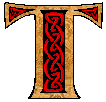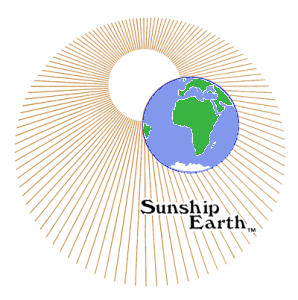 Sunship Earth
Sunship Earth

 he Sunship Earth program, developed in the 70’s, was the first complete earth education program. Designed as a five-day experience for 10-11 year olds, it is a powerful introduction to the story of life. It begins with “Welcome Aboard,” a multimedia “hooker” that helps young people see the planet as a vessel of life powered by the energy of the sun – a
he Sunship Earth program, developed in the 70’s, was the first complete earth education program. Designed as a five-day experience for 10-11 year olds, it is a powerful introduction to the story of life. It begins with “Welcome Aboard,” a multimedia “hooker” that helps young people see the planet as a vessel of life powered by the energy of the sun – a  “sunship” instead of a spaceship. Their mission is to get to know how the sunship operates, explore its marvels and mysteries, and think about what it means to be both its passengers and its crew.
“sunship” instead of a spaceship. Their mission is to get to know how the sunship operates, explore its marvels and mysteries, and think about what it means to be both its passengers and its crew.
After Welcome Aboard, the excited participants head immediately outdoors to take part in a sensory-awakening “Earthwalk.” Rather than walking along a trail, listening to the leader name the plants and animals, they discover the natural area in new ways. They use “magic paintbrushes” to see the incredible colors all around them, become “bugs” to crawl along the forest floor, and ride to the tops of the trees in a bosun’s chair. These and other adventures provide positive interactions with natural communities, helping the participants develop deeper feelings for the natural world.
Seven key ecological concepts serve as the primary focus for Sunship Earth. Participants remember them using the program’s “organizer”, EC-DC-IC-A: Energy flow, Cycling, Diversity, Community, Interrelationships, Change, and Adaptation. On three mornings, groups of five to seven young people and a leader head out on a “Concept Path.” Each of the three paths in the program consists of five stations.
Each station is the site of a conceptual activity focused on one of the seven key concepts. For energy flow, the “Food Factory” station has a giant leaf into which the young “chlorospies” crawl to learn about photosynthesis. Later, they visit “Mr. Sun’s Restaurant” to learn how the sunlight energy captured by plants is passed along through a food chain. Finally, they take part in the “Chain Gang” race, finding out that energy is “lost” to the food chain as plants and animals use it.
 Each of the fifteen stations is based on the I-A-A learning model: Informing is accomplished by reading a short passage in the participants’ “Passports”; Assimilation takes place in a participatory activity that brings the concept into the concrete; and Application to the natural world is made by finding an example of the concept happening close at hand.
Each of the fifteen stations is based on the I-A-A learning model: Informing is accomplished by reading a short passage in the participants’ “Passports”; Assimilation takes place in a participatory activity that brings the concept into the concrete; and Application to the natural world is made by finding an example of the concept happening close at hand.
The entire experience at the Sunship Study Station is tied together by a story told on the last evening: the tale of a people who lived long ago. In this narrative, the young people in a village were sent out by their elders to rediscover the secrets of life. Given a pouch of beads and a piece of cord, they set out in a special canoe on the great river of life.
The elders explained that whenever they were ready to have one of the secrets of life revealed to them, they should add one of the tubular beads in their pouch to the cord, separating it with one of the colored beads representing the members in the family of life. Each time they strung one of the tubular beads they would have an adventure pointing up how life works. Upon returning to their community, the young people would be able to share their experiences, using the beads to tell the story of the secrets of life.
Of course, the seven secrets that tie all life together are the seven concepts the Sunship Earth participants have learned during the week, and it doesn’t take long for them to make the connection. Afterwards, like the young people in the story, the Sunship Earth participants each receive a set of beads to wear representing what they have learned, not only to remember the story of the secrets of life, but to share their experiences when they return home. As they tie the beads around their neck, they are tying themselves into the story of life, and their most important journey begins.
